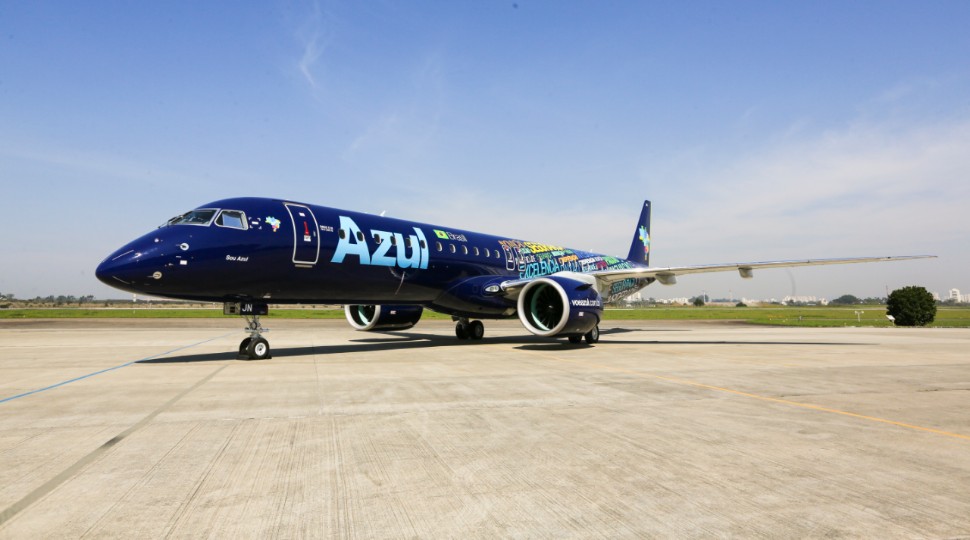Brazil’s low-cost carrier Azul has proposed to shareholders a joint venture with Portuguese flag carrier TAP Air Portugal as it looks to gain a greater foothold in the transatlantic travel market, the company says in its investor update on 7 November.
While the two airlines have spoken of plans for a joint venture as early as 2017, they had yet to take steps to formalise the alliance. David Neeleman, Azul’s founder and chairman, says the company is excited to bring the collaboration between the two airlines into a new phase which will benefit both the airlines as well as its passengers across the vast South American country.
Since Neeleman's Atlantic Gateway consortium took a share in TAP in 2015, the Portuguese airline has undergone a dramatic restructuring, including an extensive fleet renewal and network expansion across the Atlantic. TAP is currently the leading operator of scheduled services between Europe and South America.
“TAP is going through the same kind of fleet transformation as we are,” Neeleman says. “We are really excited about our investment and the strategic value of the joint venture. There will be huge synergies, we will be able to coordinate schedules and fares, but also as an investment.”
Neeleman also praised the new government in Brazil, elected in October 2018, for putting processes in place that have already made a positive impact on aviation in what is generally believed to be an underserved country in terms of air travel. Taxes have been reduced and investment in airport infrastructure across the country have contributed to a what is believed to be the beginning of a new era for the industry.
“There is newfound optimism in the country, the ministers are doing all the right things and Brazil is headed in the right direction,” Neeleman says. “We are adding this capacity before Brazil takes off, we think it will grow again in the next couple of years and are poised to take advantage of that growth.”
On 7 November, Azul reported a 26% rise in overall revenue during the third quarter as the effects of the company’s cost-saving measures as well as increased passenger demand and more efficient aircraft made themselves felt.
Revenue rose to R3 billion ($733 million), from R2.4 billion in the same period last year, as the Sao-Paulo-based airline continues to transition to newer, more fuel-efficient aircraft like the Embraer 195-E2. Azul operates one of the youngest fleets in Latin America, with an average age of about 6.4 years, according to Cirium fleets data.
That said, the company posted a third-quarter net loss of R438 million, primarily due to the depreciation of the Brazilian currency in the past year. Airlines’ costs, including fuel, leases and maintenance expenses, are usually paid in US dollars, while income from domestic travellers is in the local currency.
Excluding the non-cash impact of foreign currency fluctuation, Azul posted a net profit of R441 million, up 57% from R282 million during the same period a year ago.
FLEET RENEWAL ON TRACK
Azul took delivery of its first E195-E2 in September, and the company says its performance is “exceeding expectations.” Azul was Embraer’s launch customer for the fully re-engineered E195-E2.
“The E2 is 14% more efficient on a trip-cost basis than the previous model and comes with 18 additional seats. Going forward we continue to expect consistent CASK (cost per available seat kilometer) reductions as we add more E2s and Airbus A320neos to our fleet, replacing older generation aircraft,” Azul says in its quarterly report.

Azul was the E195-E2's launch customer and received the first aircraft in September
Embraer
Neeleman describes the new E-Jet variant as transformational for the airline. “It gives us flexibility to connect routes that have never been connected before in Brazil.”
Azul has more than 50 E2s on order from Embraer, and Neeleman says the manufacturer could accelerate deliveries if needed. As part of its fleet renewal, Azul plans to sublease up to 32 E1s as the E2s enter operation.
“The older E195 served their purpose but when new technology came out it’s important we transition as soon as possible,” Azul chief executive John Rodgerson says.
Including the first E195-E2, Azul added five new aircraft to its fleet during the third quarter, bringing the total number of aircraft in operation to 133 at the end of September. Of those, 33 aircraft, representing 45% of total capacity, were next-generation types. Azul expects to add another 12 aircraft in the fourth quarter, including five more E195-E2s. Its first of ten A321neo aircraft on order is also expected to be among these.
Rodgerson says the airline hopes to have 12 of these planes operating in the fleet by 2022, and their first mission will be to to connect its hubs of Sao Paulo, Belo Horizonte and Recife, but that the airline sees further opportunity to use these aircraft on its ever-expanding inner-Brazilian network.


























